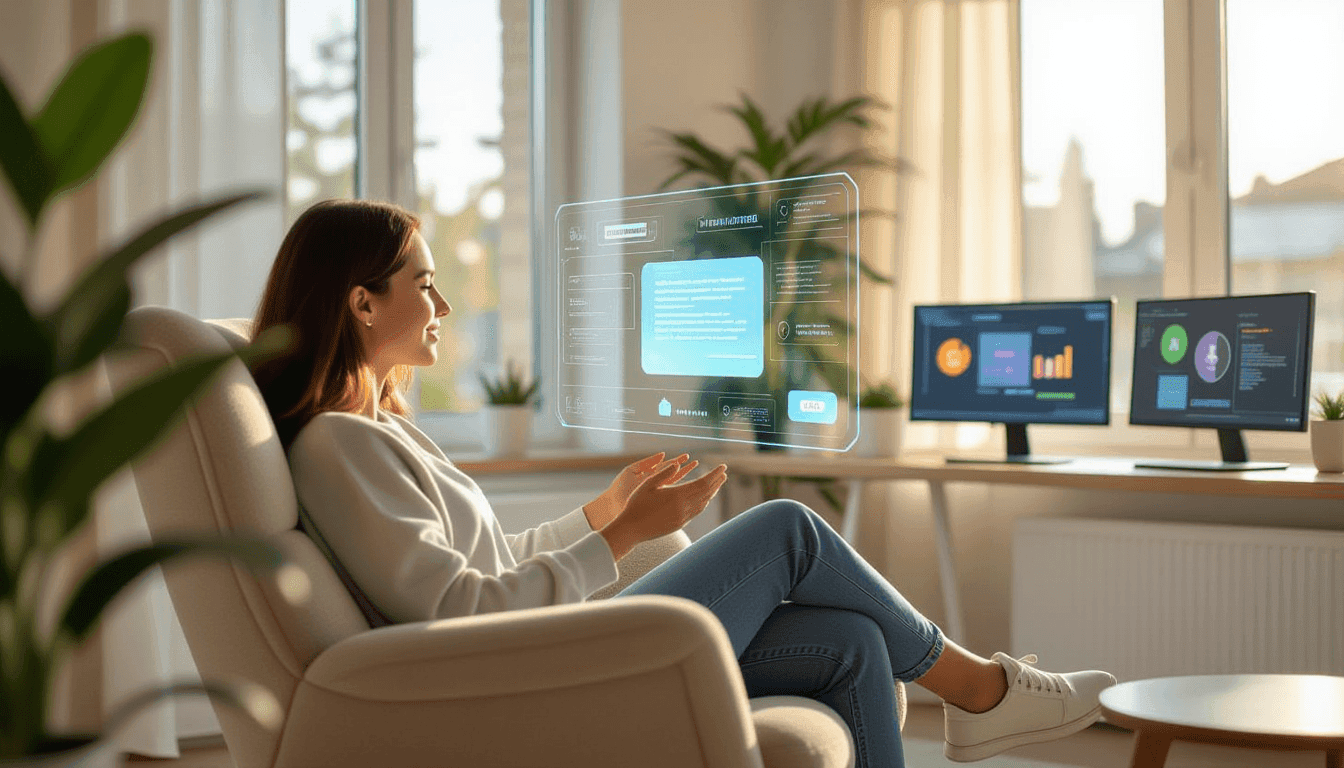Answer just a few questions and we'll have you matchedwith your perfect Companion Robot!Click now for your FREE custom report!
Language Learning Revolution: How Conversational Robots Improve Fluency

The Rise of Conversational Robots: Transforming Language Learning Through AI Interaction
Let’s face it – learning a new language can feel about as fun as watching paint dry. But what if I told you there’s a way to practice your target language without the awkward small talk or judgment from native speakers? Enter the world of conversational robots, your new multilingual BFFs.
Why Traditional Language Learning Falls Short

We’ve all been there – endless grammar drills, monotonous vocabulary lists, and those cringe-worthy classroom dialogues that sound about as natural as a cat barking. Traditional language learning methods often miss the mark because they lack two crucial elements:
- Real-time conversation practice
- Immediate, personalized feedback
- Consistent availability for practice
- Low-stress learning environment
The Game-Changing Impact of Conversational Robots

Conversational robots for language learning are revolutionizing how we acquire new languages. Think of them as your patient, judgment-free language partners who are available 24/7 and never get tired of correcting your pronunciation of “croissant” for the hundredth time.
According to recent research by MIT Technology Review, students using conversational robots for language learning showed a 23% improvement in fluency compared to traditional methods. Not too shabby for chatting with a bot, right?
Key Benefits of AI Language Partners
- Personalized Learning Pace
- Adapts to your skill level
- Remembers your common mistakes
- Adjusts difficulty in real-time
- Consistent Practice Opportunities
- Available anytime
- Never gets tired or frustrated
- Maintains conversation flow
- Reduced Anxiety
- No fear of judgment
- Safe environment for mistakes
- Builds confidence gradually
How Conversational Robots Actually Work

These clever little linguistic allies use a combination of natural language processing (NLP) and machine learning algorithms to understand and respond to your attempts at communication. They’re like the Swiss Army knife of language learning tools, equipped with:
- Speech recognition technology
- Pronunciation analysis
- Grammar correction algorithms
- Contextual response generation
Real-World Applications and Success Stories

Jibo robots in educational settings demonstrate how students using conversational robots for language practice reported 40% less anxiety compared to traditional conversation partners. One particularly interesting case involved a group of Japanese learners who improved their English speaking confidence by 60% after just three months of regular practice with AI language partners.
Practical Implementation Tips
Want to make the most of your robotic language buddy? Here’s how:
- Start Simple
- Begin with basic greetings
- Focus on everyday conversations
- Gradually increase complexity
- Regular Practice Sessions
- Schedule daily 15-minute chats
- Mix topics to keep it interesting
- Review corrections immediately
- Track Your Progress
- Record your conversations
- Monitor improvement areas
- Set achievable goals
The Future of Language Learning Technology

The landscape of language learning is evolving faster than you can say “artificial intelligence.” Experts at UC San Diego Extended Studies predict that conversational robots will become increasingly sophisticated, offering:
- More natural conversation flow
- Better emotional intelligence
- Enhanced cultural context understanding
- Improved accent recognition
Making the Most of Your AI Language Partner
To really maximize your learning with conversational robots, consider these pro tips:
- Conversation Topics to Explore
- Daily routines
- Current events
- Personal interests
- Cultural exchanges
- Practice Techniques
- Role-playing scenarios
- Story-telling exercises
- Opinion discussions
- Cultural exchange simulations
Overcoming Common Challenges
Like any technology, conversational robots aren’t perfect (yet). Here’s how to handle some common hurdles:
- Limited Responses: Mix up your conversation topics
- Technical Glitches: Keep sessions short initially
- Accent Recognition: Speak clearly and gradually increase speed
- Natural Flow: Practice with set scenarios first
Integration with Traditional Learning Methods
The secret sauce? Using conversational robots as a complement to, not a replacement for, traditional learning methods. Here’s an ideal weekly practice schedule:
Activity | Time Allocation | Purpose |
|---|---|---|
Robot Conversations | 30 mins daily | Speaking practice |
Traditional Study | 45 mins daily | Grammar/Vocabulary |
Human Interaction | 2-3 hours weekly | Real-world application |
Measuring Success and Progress
How do you know if your robot buddy is actually helping? Look for these indicators:
- Increased speaking confidence
- Improved response time
- Better pronunciation accuracy
- Expanded vocabulary usage
The Bottom Line
Conversational robots are transforming language learning from a dreaded chore into an engaging, effective practice. While they might not replace human interaction entirely (and honestly, would we want them to?), they’re proving to be invaluable tools in the language learning toolkit.
Remember, the goal isn’t to become best friends with a robot (though I won’t judge if you do), but to use these AI-powered tools to build confidence and fluency in your target language. So why not give your new digital language partner a try? Your future multilingual self will thank you.
Just think – in a few months, you could be confidently ordering that croissant in perfect French, thanks to countless practice sessions with your patient robot tutor. And unlike human conversation partners or social robots used for other emotional support roles, these ones won’t judge you for practicing at 3 AM in your pajamas.



